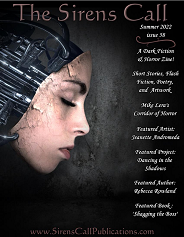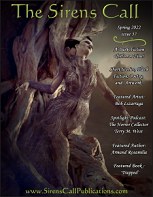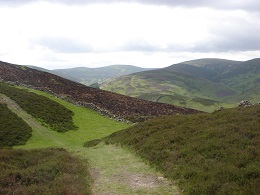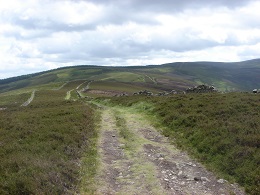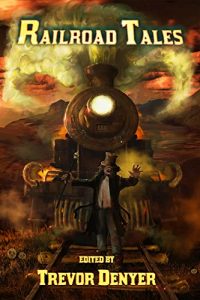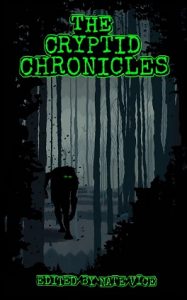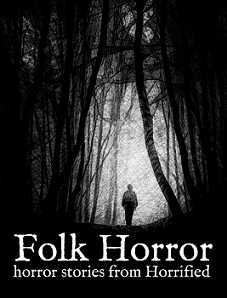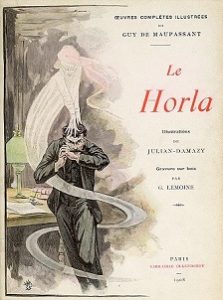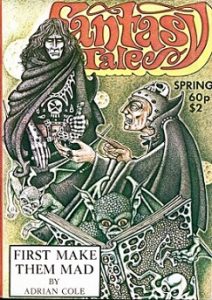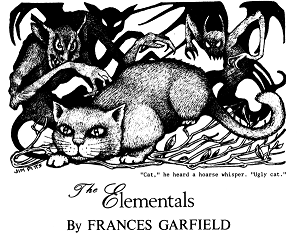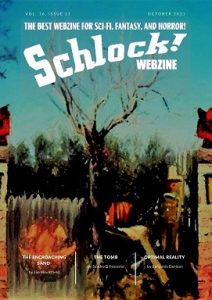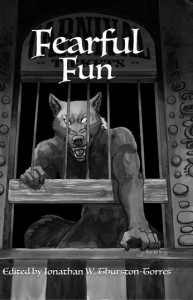
© Thurston Howl Publications
Mermaid Fair, a short story I wrote under the pseudonym Jim Mountfield, is featured in the recent anthology Fearful Fun from Thurston Howl Publications. The stories in Fearful Fun are all set in fairgrounds, carnivals, amusement parks, circuses, Halloween haunted-house attractions and the like but, as the word ‘fearful’ in the anthology’s title implies, their protagonists encounter dark and macabre goings-on at these supposedly ‘fun’ places. In fact, ‘creepy fairground’ stories have constituted a popular sub-genre of horror fiction and cinema. Its most famous examples include the 1932 Tod Browning movie Freaks, the 1962 Herk Harvey movie Carnival of Souls and, published the same year that Carnival was released, the Ray Bradbury novel Something Wicked This Way Comes.
In part, Mermaid Fair was inspired by a practice in the 19th century whereby carnival-sideshow operators would graft together pieces of stuffed fish and stuffed apes and pass them off to gullible punters as ‘mermaids’. Obviously, these looked nothing like the mermaids of folklore and popular culture, the luscious, long-haired, bare-breasted young ladies with fishes’ tail who’d sit alluringly on remote ocean rocks. Fake though they are, I’ve always found pictures of the sideshow mermaids creepy and grotesque – especially now that the passage of time has left the things more than slightly decayed.
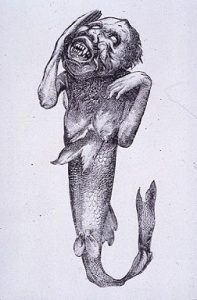
From emilyjessicaturner.com
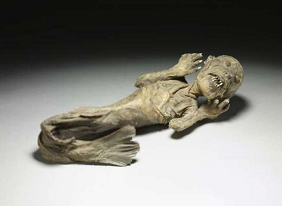
© The Trustees of the British Museum
A rather different source of inspiration for Mermaid Fair was ‘the Shows’, a motley assortment of fairground rides, stalls and amusement arcades that would come – and still do come, as far as I know – to my Scottish hometown of Peebles every June while it was staging its annual Beltane Festival. When I was a kid, the Shows were great fun, surely the highlight of my Peebles year. By the early 1980s, however, when I was a bit older and in my mid-to-late teens, I was more trepidant when I ventured into the Shows. This was because they’d become an arena where gangs of youths from Peebles, and from neighbouring country towns like Biggar and Galashiels, would try to batter the crap out of each other, and I didn’t want to get caught in the crossfire. Yes, lots of hormonally-charged young men lived in the region’s small towns, which admittedly didn’t have a great deal to offer them socially. Desperate for ways to banish their boredom, vent their frustrations and release their energies, they adopted the custom of battling each other at popular public gatherings such as the Shows.
I have to say, 40 years on, I find it amusing when I see Peebles blokes of a certain age complaining on Internet forums about anti-social behaviour by young people. Hold on, I think. Don’t you remember what you were getting up to at 17 or 18?
Thus, Mermaid Fair has gangs of young men, from rival towns, descending on a travelling fair to stage a good old-fashioned barney, and also has a fairground exhibit featuring some alleged mermaids. I hope the two plot-strands come together convincingly at the story’s end. Rather than set it in the south of Scotland, where Peebles is, I set it in the East Anglia region of England, another part of the world I know well. Indeed, it references a well-known piece of East Anglian folklore, the Wild Man of Orford – which, despite the name, isn’t about a ‘wild man’ but about a mer-creature.
Mermaid Fair, incidentally, is a reprint, not a story I wrote originally for Fearful Fun. Previously, in 2010, it’d appeared in an edition of the now-defunct webzine Death Head’s Grin. But I’d written it several years before that, in 2005, and back then I’d submitted it to the editors of another anthology that was going to feature stories about fairgrounds, carnivals and the like. The anthology’s editors not only rejected the story, but returned it to me with five paragraphs of brutal comments. They dissed the opening (“…too long, convoluted, difficult to understand… I ALMOST stopped reading there…”), the general prose (“…lost its flavour…”), the ending (“…didn’t have much punch and didn’t answer the big question…”) and the amount of violence (“What’s the term they use nowadays? Gratuitous violence? Gratuitous…”). I felt so deflated that I set aside Mermaid Fair and almost never looked at it again, convinced it was terrible.
I don’t know why I dusted it down for Death’s Head Grin, but I’m glad that I did. And to be fair to the editors of that 2005 anthology, I did try to amend a few things in the story that they’d objected to, before submitting it again. This included toning down the violence, which I suppose had been somewhat over-the-top in the original version. Nonetheless, I didn’t appreciate their tone…
Anyway, in 2022, Mermaid Fair has been published again and – hurrah! – this time I’ve been paid for it. I guess the story’s history holds two lessons for aspiring writers. When you receive a rejection message from an editor with some comments included, you should: (1) yes, pay attention to the editor’s opinions about what could or should be improved; but (2) if he or she’s been snarky or condescending, no, don’t let it get to you.
Copies of Fearful Fun can be ordered here.
